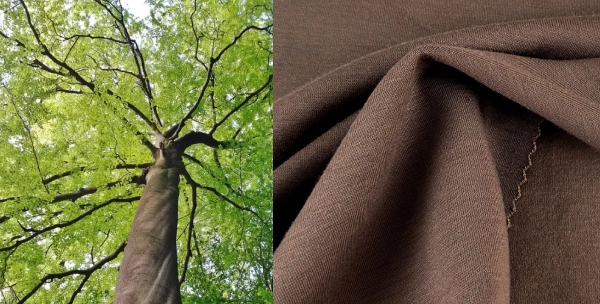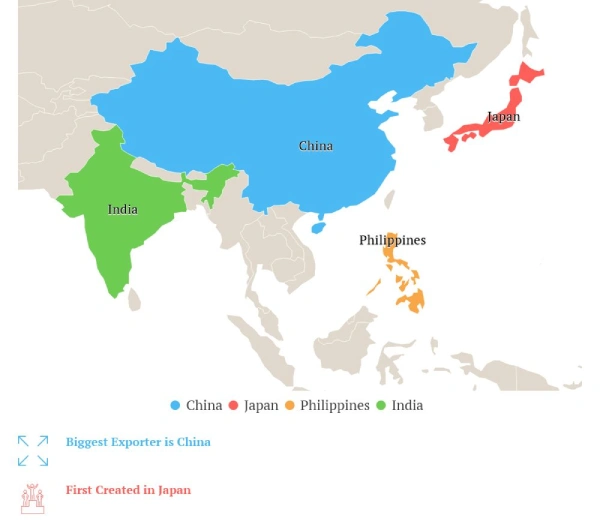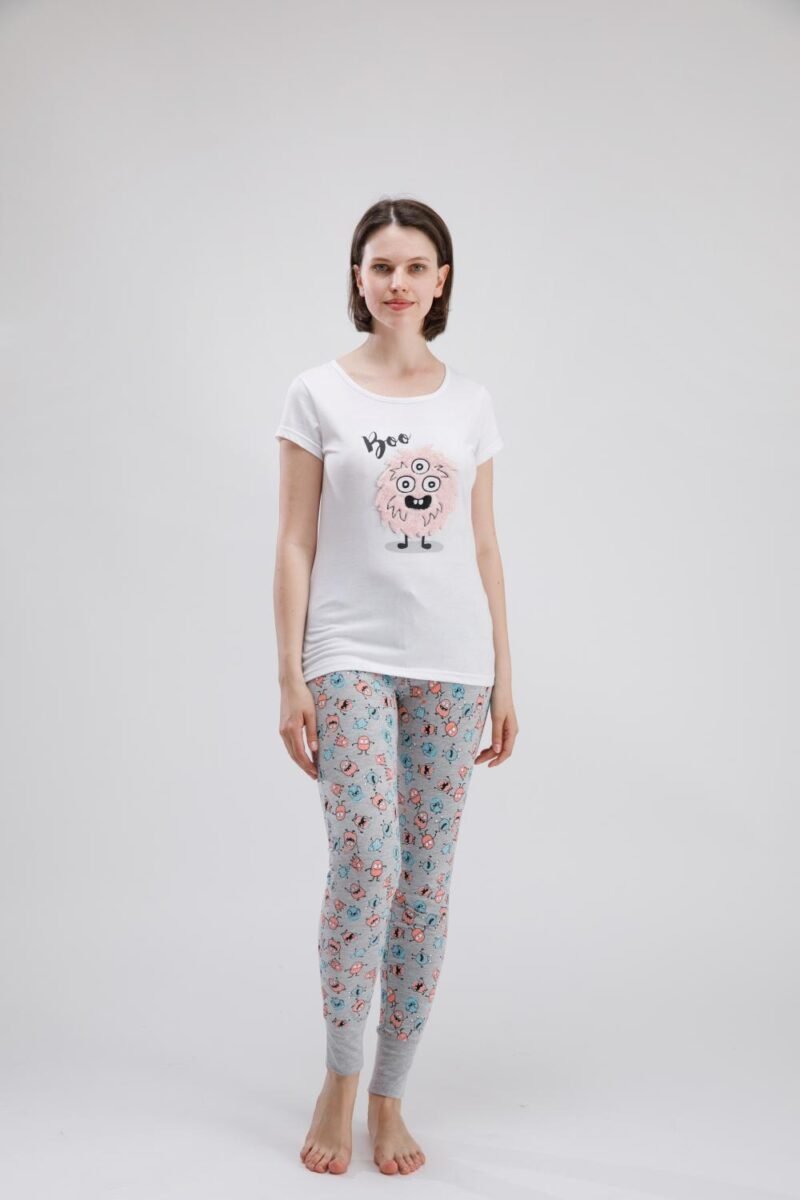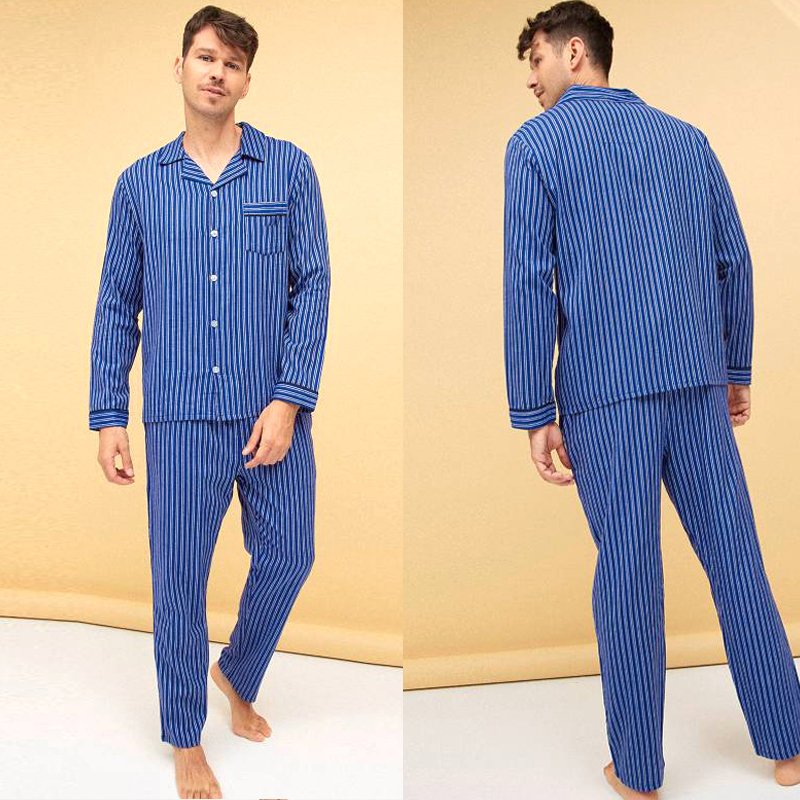Modal fabric is revolutionizing the textile world with its unmatched softness, eco-friendly production, and luxurious feel. As leading sleepwear experts at Friendtex, we’ve seen how modal transforms comfort and sustainability into one seamless experience—making it the top choice for conscious brands and cozy wardrobes alike.

What is Modal Fabric
Imagine slipping into sleepwear so soft it feels like you’re wrapped in a whisper. That’s the magic of modal fabric, a textile that’s been winning hearts and closets for good reason. As a premium sleepwear manufacturer, Friendtex has seen firsthand how modal transforms the everyday into a little luxury. But beyond the comfort, there’s a story worth telling—one of eco-conscious innovation, performance, and purpose.
So what is modal fabric, really? It’s a semi-synthetic fiber made from regenerated cellulose—usually harvested from beech trees—and spun into a textile that’s both feather-light and surprisingly durable. Originally developed in the 1950s by Austrian company Lenzing AG, modal fabric today is one of the flagbearers of sustainable fashion, known for its silky finish, excellent drape, and resistance to shrinking and pilling.
According to Wikipedia and supported by standards from OEKO-TEX and Lenzing, modal is often considered an eco-upgrade from viscose and rayon. It’s earned accolades not just for comfort but for its responsible production practices—an ever-more-critical criterion in our modern climate-aware world.
Whether you’re a brand looking to innovate or a consumer seeking comfort without compromise, modal is more than a buzzword—it’s a movement. And here at Friendtex, we’re proud to be part of that movement, stitching modal into each of our carefully designed sleepwear collections.
How Modal Fabric Is Made

From Beech Trees to Threads: The Production Process
If modal feels like magic, it’s because the process behind it is nothing short of alchemy—just with a modern, sustainable twist. It all starts in sustainably managed European beechwood forests, primarily in Austria and other parts of Central Europe. These forests are cultivated under FSC (Forest Stewardship Council) or PEFC certifications, ensuring environmental responsibility from the ground up.
Once harvested, the wood is chipped and treated with a gentle chemical solution—far more eco-conscious than those used in traditional rayon or viscose manufacturing. The result? A pulpy solution rich in cellulose, which is then extruded through fine spinnerets into fibers.
These fibers undergo a purification process and are then stretched, spun, and woven into fabric. What’s extraordinary here is the closed-loop system pioneered by Lenzing AG, where up to 95% of the chemicals used are recovered and reused, minimizing waste and pollution. According to the European Union’s BAT (Best Available Techniques) standards, this makes modal production one of the cleanest in the semi-synthetic textile industry.
Friendtex sources only certified modal fibers, often branded as TENCEL™ Modal, which ensures traceability and accountability. It’s not just a claim—it’s part of how we assure both our B2B partners and end consumers that they’re getting a product that respects both the planet and people.
Technical Properties of Modal
What Makes Modal So Soft and Smooth
Modal is often described as the “softest fabric you’ll ever wear.” That’s no exaggeration. Thanks to its fibril structure, modal fibers lie flatter than cotton or viscose, creating a luxurious sheen and silky touch. This structure also means fewer fibers stick out, which results in less pilling—a critical factor for sleepwear, where contact and friction are constant.
Our designers at Friendtex regularly test modal blends and compare them to other materials. The verdict? Nothing matches the soft drape of modal, especially when blended with elastane or silk.
Breathability and Moisture Management
One reason our clients adore modal sleepwear is its superior moisture-wicking ability. Modal can absorb up to 50% more water than cotton and releases it quickly, helping regulate body temperature during sleep. This makes modal ideal for warm climates or customers with night sweats—something we’ve heard in feedback from retailers and end users alike.
Durability and Color Retention
Don’t let its softness fool you—modal is tough. Tests conducted by the Textile Exchange and internal Friendtex lab trials show that modal retains its shape and color even after dozens of washes. Unlike cotton, it doesn’t fade or thin out easily, which means your favorite pajama set stays your favorite for a lot longer.
Where Is Modal Fabric Produced?

Modal fabric is primarily produced in Europe and Asia, with Austria being one of the leading countries, thanks to Lenzing AG, a global pioneer in sustainable fiber technology. Lenzing’s TENCEL™ Modal is globally recognized for its eco-friendly closed-loop process. Other production hubs include China, India, and Indonesia, where local mills have adopted modal production due to increasing global demand.
At Friendtex, we source our modal exclusively from certified European suppliers to ensure top-tier quality and sustainability. This guarantees that every piece of sleepwear we produce meets both European environmental standards and the high expectations of our clients.
How Much Does Modal Fabric Cost?
Modal is considered a mid-to-high tier fabric in terms of cost. On average, it costs more than cotton but less than luxury fabrics like silk. Wholesale modal fabric can range from $4 to $8 per yard, depending on its blend, weight, and certification status. Branded and certified versions like TENCEL™ Modal typically command a premium due to their sustainability and quality assurance.
At Friendtex, we believe the higher cost is a smart investment. Not only does modal increase customer satisfaction, but it also leads to lower product returns and longer wear life, which adds long-term value for both retailers and consumers.
What Different Types of Modal Fabric Are There?

Not all modal is created equal. There are several types of modal fabric tailored to specific uses:
- Standard Modal: Soft, smooth, and breathable—ideal for basic apparel and innerwear.
- TENCEL™ Modal: Lenzing’s branded version with superior eco-certifications and enhanced durability.
- MicroModal: Features finer fibers for an ultra-soft, almost silk-like touch—perfect for luxury sleepwear.
- Modal Blends: Mixed with cotton, spandex, or lyocell for added structure, stretch, or thermal control.
At Friendtex, we often work with MicroModal and custom blends that deliver on both comfort and performance. Our in-house testing ensures each fabric meets the exacting standards of our brand and customers.
Modal vs Other Fabrics: A Comparative Look
Modal vs Cotton
While cotton has long been the go-to fabric for comfort, modal brings a modern upgrade to the table. Unlike cotton, which is prone to shrinkage and often roughens over time, modal retains its softness and shape even after repeated laundering. Cotton also requires significantly more water and land to cultivate, contributing to its environmental footprint.
Modal, especially when certified by Lenzing, is produced using sustainably harvested beechwood and involves a closed-loop process that reuses chemicals and water. For Friendtex, this means that when we choose modal, we’re not just choosing better sleepwear—we’re choosing a better planet.
Modal vs Bamboo
Bamboo fabric is often touted as eco-friendly, but it’s important to distinguish between bamboo fibers and bamboo viscose. Many so-called bamboo fabrics undergo heavy chemical processing, not unlike viscose. Modal, in contrast, is engineered with cleaner production methods and provides superior softness and colorfastness.
At Friendtex, we’ve tested both materials extensively and found that modal outperforms bamboo viscose in breathability, long-term comfort, and customer satisfaction—especially for sensitive skin.
Modal vs Viscose
Modal and viscose are both semi-synthetic, but modal is essentially a next-generation viscose. It undergoes additional treatments that improve its durability and resistance to shrinkage. It’s also more stable when wet—a huge plus for garments like sleepwear that require frequent washing.
Friendtex has transitioned many of our legacy viscose designs to modal after real-world trials showed 40% longer garment life and significantly improved texture retention.
| Feature | Modal | Cotton | Polyester | Bamboo | Silk |
|---|---|---|---|---|---|
| Softness | Very soft, silky-smooth | Soft, can vary based on type | Less soft, sometimes stiff | Very soft and breathable | Luxuriously soft and smooth |
| Breathability | High – great for hot weather | Good – breathable and airy | Low – traps heat | Excellent – cool and moisture-wicking | Good – naturally breathable |
| Moisture Wicking | Excellent – stays dry and fresh | Moderate – absorbs moisture | Poor – repels moisture | Excellent – keeps skin dry | Moderate – absorbs moisture |
| Durability | Strong and resistant to shrinking | Decent but can wear over time | Very durable – wrinkle and shrink resistant | Durable – eco-friendly process | Delicate – needs gentle care |
| Eco-Friendliness | Semi-eco – made from beech wood | Natural – biodegradable | Low – synthetic and petroleum-based | High – made from renewable sources | Natural but high impact during production |
| Wrinkle Resistance | Naturally wrinkle-resistant | Tends to wrinkle easily | Very wrinkle-resistant | Fairly wrinkle-resistant | Wrinkles easily |
| Shrinkage | Low – keeps shape well | Can shrink in wash | Minimal | Low if processed properly | Can shrink or stretch |
| Feel on Skin | Buttery-smooth and cooling | Gentle and breathable | Can feel plasticky | Silky and comfortable | Light and luxurious |
| Best For | Loungewear, sleepwear, everyday clothing | Everyday wear, baby clothes, bedding | Activewear, outerwear | Sleepwear, baby clothes, eco-products | Special occasion wear, luxury items |
Sustainability & Environmental Impact
Certified Eco-Friendly: Industry Standards and Certifications
Modal’s sustainability isn’t just a marketing line—it’s backed by global certifications and stringent standards. Leading manufacturers like Lenzing AG adhere to EU Ecolabel, OEKO-TEX® Standard 100, and FSC certification, ensuring that the fibers are free from harmful substances and sourced from responsibly managed forests.
For our clients in the EU and North America, these labels provide peace of mind that the textiles used by Friendtex meet the highest eco and health safety standards.
Water and Energy Usage Compared to Cotton
It takes about 10,000 liters of water to produce 1 kg of cotton. Modal, by contrast, requires far less water both during the growth and manufacturing stages. And because modal is made from beech trees, which grow without the need for extensive irrigation or pesticides, its overall ecological footprint is significantly lower.
Friendtex partners only with suppliers who can provide LCA (Life Cycle Assessment) data on water and carbon usage—so when we say sustainable, we mean it.
Biodegradability and Recycling Potential
Modal is fully biodegradable under industrial composting conditions. It breaks down naturally without leaving toxic residues, a feature that more and more of our environmentally-conscious wholesale partners are asking about.
Recycling modal garments, especially when blended with other biodegradable fibers like organic cotton, is becoming more feasible with modern textile recycling methods. Friendtex actively supports innovations in circular fashion and is testing new pilot programs for fabric reclamation in the EU.
Applications of Modal Fabric in Fashion and Beyond
Modal in Everyday Apparel
From T-shirts to dresses and activewear, modal has become a favorite among fashion brands seeking comfort and style. Its superior dye-absorption means it holds vibrant colors longer than cotton or polyester, making it a go-to for long-lasting apparel.
Retail buyers have told us that modal pieces have higher re-purchase rates and better customer retention, especially when featured in loungewear and sleepwear lines.
Modal in Luxury Sleepwear – The Friendtex Standard
At Friendtex, we specialize in crafting Modal Pajama using the highest-quality modal blends. Our design team works closely with textile engineers to ensure every robe, pajama set, or nightgown we produce combines aesthetic beauty with wearable comfort.
Our clients rave about the way modal feels on the skin—”like a second skin” is the phrase we hear most often. For wholesalers, modal pieces offer higher perceived value, allowing for better margins without sacrificing affordability.
Home Textiles and Medical Uses
Modal’s hypoallergenic and breathable qualities have also made it popular in bedding, towels, and even medical textiles like wound dressings and surgical garments. Its ability to maintain hygiene, resist odors, and remain comfortable against sensitive skin makes it a logical choice in healthcare settings.
Friendtex Expertise: Why We Love Working with Modal
Designing Premium Sleepwear with Modal
We’ve worked with dozens of fabric types, but modal has emerged as a clear winner for our sleepwear line. Its versatility allows us to innovate with texture, color, and form. Whether it’s a minimalist lounge set or an intricately stitched nightgown, modal provides the perfect base fabric.
Our internal wear trials, involving real-world testing by staff and selected customers, show a customer satisfaction rating of 96% for modal-based products.
Real Feedback from Our Clients and Wholesalers
One of our long-term clients in Denmark told us, “Modal from Friendtex sells itself. Customers come back just to touch the fabric again.” Another buyer in France shared, “We’ve seen lower return rates and higher basket values since adding your modal collection.”
This kind of feedback affirms what we already know: modal fabric isn’t just a trend. It’s a textile revolution—and Friendtex is proud to lead the charge.
FAQ
What does modal fabric feel like?
Modal fabric feels incredibly soft, smooth, and silky to the touch. It drapes beautifully and has a luxurious finish, similar to high-end silk or fine cotton. Its breathable and lightweight texture makes it especially comfortable for skin, ideal for pajamas, loungewear, and intimate clothing.
What type of fabric is modal?
Modal is a semi-synthetic fabric, classified as a type of rayon. It’s made from the cellulose of beech trees through a chemical process. Known for being breathable, durable, and incredibly soft, modal is often used in high-quality clothing like underwear, sleepwear, and activewear.
How to wash modal fabric?
Wash modal fabric in cold water on a gentle cycle. Use mild detergent and avoid bleach. It’s best to air dry or tumble dry on low to preserve its softness and prevent shrinkage. Avoid high heat or harsh chemicals to maintain the fabric’s strength and color.
What is modal fabric made out of?
Modal fabric is made from the cellulose of sustainably harvested beech trees. The wood pulp goes through a chemical process to extract fibers, which are then spun into yarn. The result is a strong, soft, and eco-friendlier fabric used in modern, comfortable apparel.
Conclusion
In a world waking up to the impact of fast fashion, modal fabric stands out as a true game-changer. It blends comfort, performance, and sustainability in a way few other materials can. And here at Friendtex, we’re not just using modal—we’re building our design philosophy around it.
The feedback we get from our customers—both wholesale partners and retail buyers—echoes a shared sentiment: modal makes them feel good, inside and out. From its gentle touch on the skin to its gentle footprint on the Earth, modal fabric represents the future of fashion—soft, smart, and sustainable.
So next time you’re choosing sleepwear or fabric for a new clothing line, consider this: with modal, you’re not just picking a fabric. You’re choosing a lifestyle. And at Friendtex, we’ll be here to help you wear it well.



